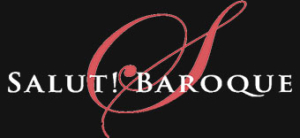The Influencers Review | Sydney Arts Guide
Review by Paul Nolan, read the review here.
My favourite social media influencers are bold. They enjoy showing new beauties and amazi
In their concert ‘ The Influencers’, Salut! Baroque d
Players within this concert’s Salut! Baroque line-up and guest vocalist Andrew O’Connor were also influencers as keen as any social media star followed by many. Their presentation of well and lesser known gems displayed for us the myriad of style approaches employed by Baroque trailblazers for instrumental and vocal writing.
Composers are referred to in Tim Blomfield’s excellent programme notes to be influenced by past, present and movements toward the future, by relatives in the business plus frontrunners working in as well as visiting lands near and far.
Such influences occurred in the Baroque period just as in this concert, by musicians listening live to each other or by accessing accounts of music and their composers. Musicians read about new and old works, followed trends, mined vocal and instrumental scores for expressive techniques and visited other centres to witness functional music live at composers’ posts.
For us attending ‘The Influencers’, tracing the flow of trends was easy. The varied network of experience or innovation was demonstrated live in interestingly varied sequence by Salut! Baroque’s early music experts.
As the programme notes indicated, even composers like JS Bach or Purcell who influence our practice now so much and are broadly esteemed were subjected to national and stylistic prejudices and new-versus-old fashions or opinion.
To demonstrate the undulation of innovation during Baroque times, guest bass baritone Andrew O’Connor prese
O’Connor is an increasingly in-demand vocalist,
From his opening interpretation of text and attentive duetting with Jane Downer’s melifluous oboe line in the aria Ich habe genug from the mighty JS Bach’s now always influential cantata stock, O’Connor displayed the variety of Baroque text setting attractively, in a touching, inspiring and warm offering.
The vocal works were jewels in a variegated and very interesting crown and display of the musical and social status quo. Stretching from the sacred (Buxtehude’s shimmering Vulnerasti cor meum) to the British theatre (Purcell’s ‘Cold Song’ from King Arthur) or French courtly song of pastoral love (Michel Lambert’s Ma bergère est tendre et fidele), this was a fine sampling of the use of the voice by Baroque composers.
All vocal brackets showcased the Baroque intimacy of combining voice with an ensemble of instruments. Here Salut! Baroque’s mesh of period strings, recorders and oboe satisfied many times over. Above this tight tapestry, O’Connor’s voice took us on an enjoyable, well-phrased tour of Baroque expression. Such clear, vivid influencer-style instalments spanned five languages and were seamlessly shaped across the programme despite an intersection of several stylistic forces.
Instrumental trends were represented in new lights throughout. Telemann’s prolific output and popular profile was celebrated in this programme. His Viola Concerto in G major, the first known concerto for the instrument, was performed by Karina Schmitz with much colour and i
Unique sounds and soundscapes from Biber (his raucous Battalia in D major) and a bracket by Matthew Locke were illuminating moments in an already scintillating project.
For me, other standout moments included a rousing Air pour les Sauvages (from Rameau’s Les Indes galantes), as well as the vocal embellishments and contrasts within Vivaldi’s ope
That final influential performance



